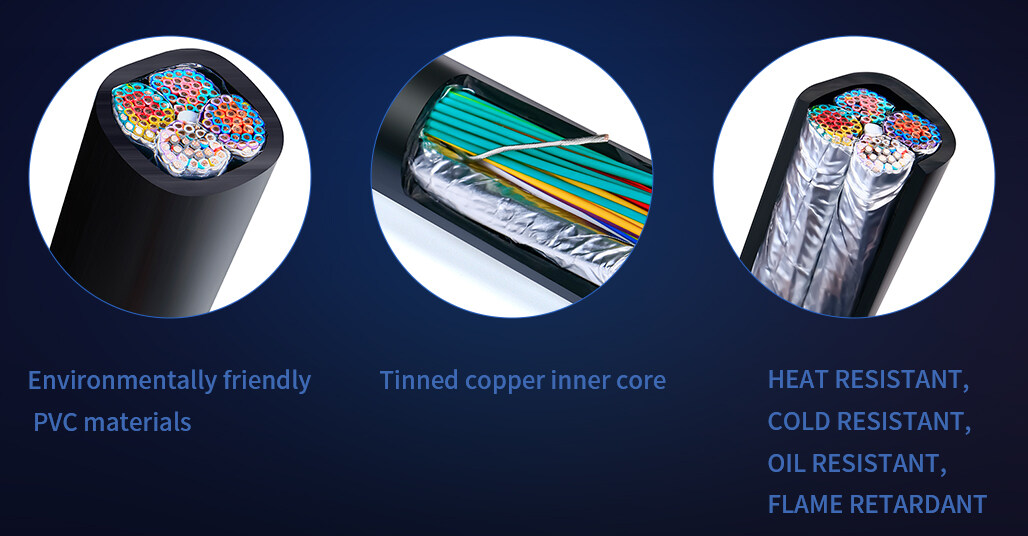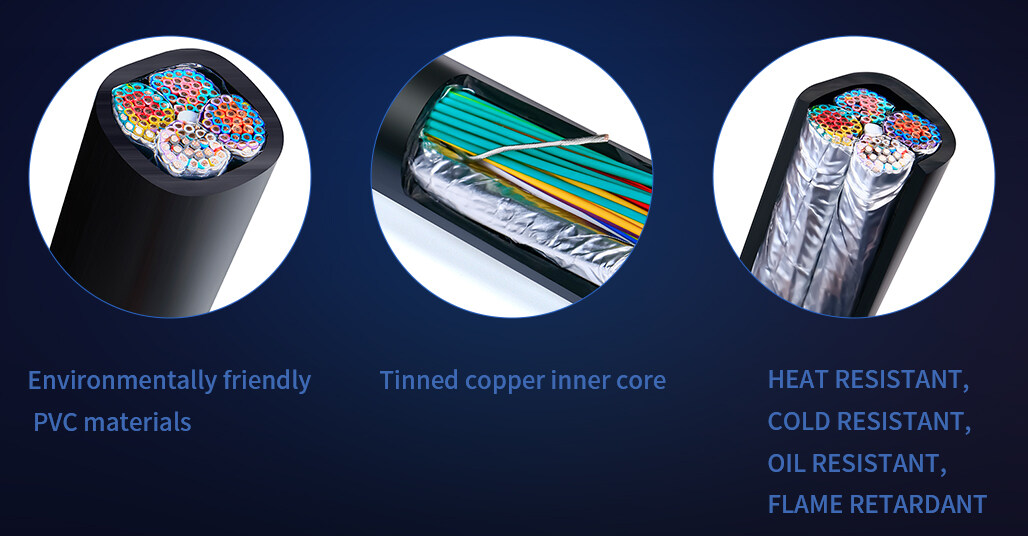Email format error
Email cannot be empty
Email already exists
6-20 characters(letters plus numbers only)
The password is inconsistent
Email format error
Email cannot be empty
Email does not exist
6-20 characters(letters plus numbers only)
The password is inconsistent

News at Linke
News from National Cable And Wire Manufacturing Company.

What is the purpose of semiconductors in high-voltage cables?
Introduction:
In the realm of modern technology, the integration of semiconductor components has become indispensable, especially in sectors like the production of high-voltage cables. These cables play a pivotal role in facilitating the transmission of electrical power over long distances. To understand their significance, let's delve into the purpose of semiconductors in high-voltage cables and their role in ensuring efficient energy transfer.
The Evolution of High-Voltage Cables:
Over the years, advancements in semiconductor technology have revolutionized the design and functionality of high-voltage cables. Semiconductors, often overlooked components in the layman's view, are intricately woven into the very fabric of these cables. They are not just passive materials; instead, they actively contribute to the cable's performance and reliability.
Semiconductors in Energy Transmission:
Semiconductors in high-voltage cables serve as crucial components for maintaining a uniform electric field and mitigating electrical stresses. Their ability to regulate voltage distribution and suppress unwanted electrical phenomena enhances the overall efficiency of the cable. This is particularly vital in scenarios where power needs to be transmitted across vast distances, such as in the case of long-distance power grids.
The Intersection of Technology and Quality
Enterprises involved in the production of high-voltage cables, like the semiconductor equipment control cable factory, understand the significance of precision and reliability. These factories leverage cutting-edge semiconductor technology to ensure that their cables meet the stringent quality standards required for efficient energy transmission.
Semiconductors and cable insulation:
One of the primary functions of semiconductors in high-voltage cables is related to insulation. Semiconductors are strategically placed between the insulating layers of the cable to maintain a uniform electric field. This not only prevents electrical breakdowns but also extends the lifespan of the cable. The semiconductor material acts as a protective shield, preventing potential damage and ensuring a stable flow of electricity.
Diversity of Semiconductors in Cable Design:
Semiconductor technology offers a diverse range of materials that can be tailored to meet specific requirements. From polymers to advanced composite materials, the semiconductor equipment control cable factory employs a variety of substances to create cables that can withstand high voltages, temperature variations, and environmental factors.

Semiconductors and heat dissipation:
In addition to their role in insulation, semiconductors play a vital role in heat dissipation within high-voltage cables. As electricity flows through a cable, heat is generated due to resistance. Semiconductors, with their unique properties, help dissipate this heat efficiently, preventing overheating and ensuring the cable's optimal performance.
Innovations in Semiconductor Technology:
The semiconductor equipment control cable factory is at the forefront of integrating the latest innovations in semiconductor technology into high-voltage cables. Nanotechnology, for instance, has paved the way for the development of nano-semiconductors, allowing for even greater precision in cable design. These nano-semiconductors enhance the cable's electrical characteristics and contribute to the overall reduction of power losses during transmission.
Environmental Considerations:
With an increasing focus on sustainable practices, the semiconductor equipment control cable factory is exploring eco-friendly semiconductor materials. Bio-based polymers and recyclable compounds are being researched to create high-voltage cables that not only meet performance standards but also align with environmental conservation goals.
Semiconductor Equipment Control Cable Factory and Industry Standards:
Adherence to industry standards is paramount in the production of high-voltage cables. The semiconductor equipment control cable factory ensures that its products comply with international safety and performance standards. Rigorous testing procedures are implemented to guarantee the reliability and durability of cables, instilling confidence in end-users and stakeholders.
Future Trends and Challenges:
Looking ahead, the integration of semiconductors in high-voltage cables is expected to continue evolving. The ongoing research and development in materials science and semiconductor technology may lead to breakthroughs that enhance cable performance, reduce energy losses, and contribute to the sustainability of power transmission systems.
Conclusion:
In conclusion, the incorporation of semiconductors in high-voltage cables is not a mere technicality but a strategic necessity. As technology continues to advance, the semiconductor equipment control cable factory plays a crucial role in ensuring the seamless integration of these components into the cables that power our modern world. The nuanced use of semiconductors not only enhances the efficiency of energy transmission but also contributes to the overall reliability and durability of high-voltage cables, positioning them as critical assets in the global energy infrastructure.

